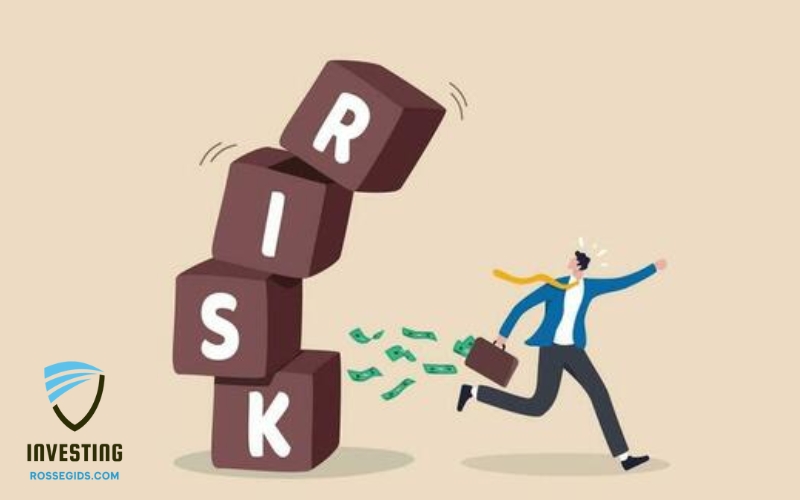In this article, we will learn about investment risks to avoid, helping you have a clearer view and make the right decisions.
1. MARKET RISK
One of the most common types of investment risks is market risk. Financial markets are always volatile, and changes in the value of assets such as stocks, bonds, and real estate can affect investors’ profits. Factors such as economic recessions, changes in interest rates, fiscal policy or unexpected events such as natural disasters or epidemics can change the value of these assets.
Although it is impossible to completely avoid market risk, you can minimize its impact by diversifying your portfolio. Allocating capital to different types of assets helps reduce dependence on a single sector, thereby minimizing the impact of strong market fluctuations.

2. LIQUIDITY RISK
Liquidity risk occurs when you cannot convert your assets into cash quickly or at a fair value. This can happen when investing in assets that are not easily sold, such as real estate, illiquid stocks, or assets that are difficult to value. In these cases, you may have difficulty getting cash when you need it urgently or in emergency situations.
To avoid liquidity risk, you need to ensure that your portfolio has a reasonable mix of assets that are easily converted into cash and assets that are highly stable. Keeping a portion of your assets in cash or liquid investments helps you better cope with situations where you need money quickly.
3. RISK OF INVESTING RISKS
One of the biggest risks when investing is investing in risky investments, especially in areas that are not well researched or in unproven assets. Investing in startups, stocks of companies that do not have much public information, or high-risk assets can bring big profits but also have the potential to lose everything.
To avoid the risk of investing in risky investments, you need to do thorough research and only invest in areas that you have a deep understanding of. If you are inexperienced, start with safer investments, such as stocks of large, well-established companies. Furthermore, never put all your assets into high-risk investments.
4. ECONOMIC RISK
Economic risk is an important factor that every investor needs to pay attention to. Changes in the macro economy such as GDP growth, inflation, unemployment or government policies can directly affect your investment decisions. For example, during periods of high inflation, the real value of investments may decrease, or industries and companies cannot maintain stable profits when the economy is in recession.
To avoid this risk, you need to monitor and analyze macroeconomic factors. Understanding economic trends helps you adjust your investment portfolio to suit the actual situation. In addition, you can invest in assets that are resistant to inflation such as gold or real estate.
5. INFLATION RISK
Inflation risk is a situation where the value of money decreases due to the increase in the prices of goods and services. When inflation is high, the real value of your investments, especially fixed-interest assets, may decrease. This can cause you to lose some of the value of your assets over time.
To avoid this risk, you can invest in assets that have the potential to outperform inflation, such as real estate or stock funds. These assets can increase in value faster than inflation and protect your assets from the decline in the value of your currency.
6. RISKS ASSOCIATED WITH POOR FINANCIAL MANAGEMENT
Another important factor is the risk of poor financial management. If you do not have a clear investment strategy and lack financial management skills, you can make costly mistakes. These mistakes can include choosing the wrong assets, not diversifying your portfolio, or not being patient enough to monitor and adjust your investments.
To avoid this risk, you need to build a clear investment strategy and manage your finances carefully. Set clear financial goals, monitor your investments regularly, and don’t hesitate to adjust your strategy when necessary. If you don’t have enough knowledge or time to manage your investments, you can seek help from financial experts.
7. RISKS OF TOO RELIANCE ON EXPERTS
Many investors make the big mistake of relying too much on expert advice without doing their own research or understanding the investment decisions. Although experts can provide useful information, they are not always right. Sometimes, these recommendations may also be influenced by factors such as personal interests or biases in evaluating investment opportunities.
To avoid this risk, you need to equip yourself with knowledge and make investment decisions based on your own research and analysis. Even with the help of experts, you need to understand the assets you are investing in and make the right decisions for yourself.
CONCLUSION
Identifying and avoiding investment risks is an important step in protecting your personal finances and achieving investment success. Although it is impossible to completely avoid all risks, you can minimize them by applying smart investment strategies, diversifying your portfolio, and always doing your own research before making a decision. Remember that investing is not a quick race but a long-term journey. Only by being cautious and patient can you build a solid and sustainable financial foundation.
